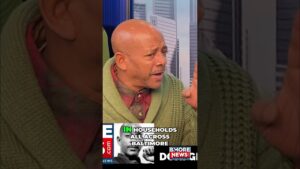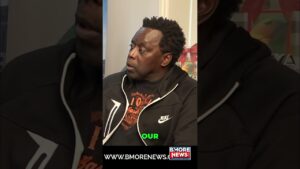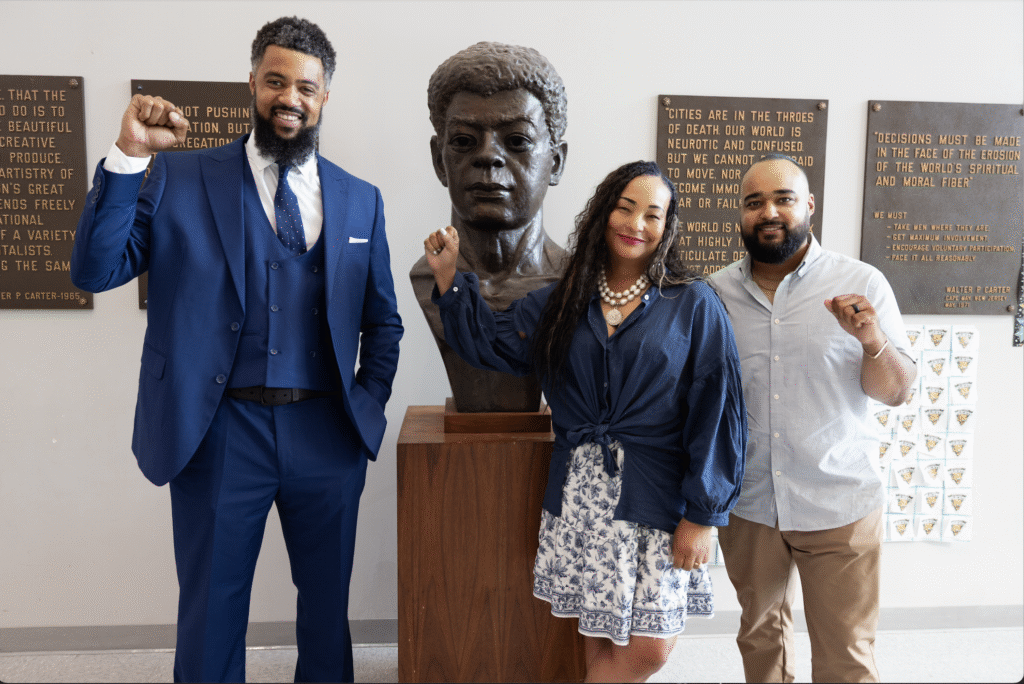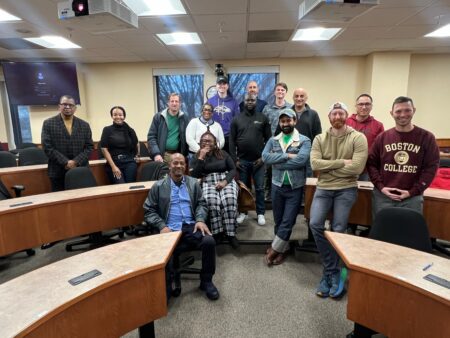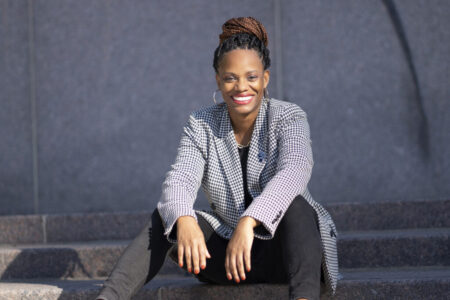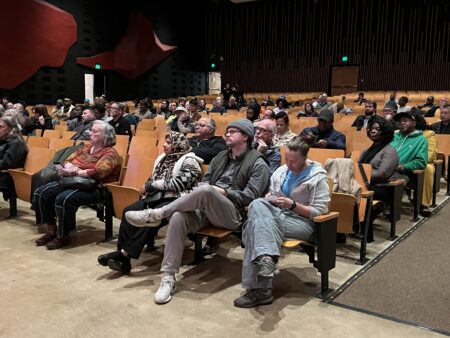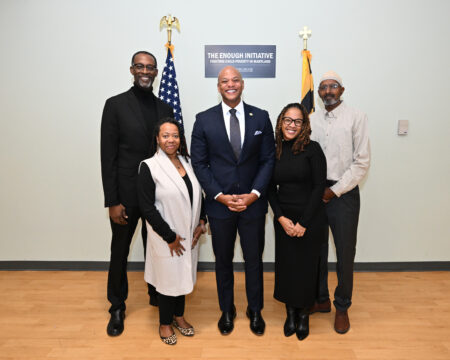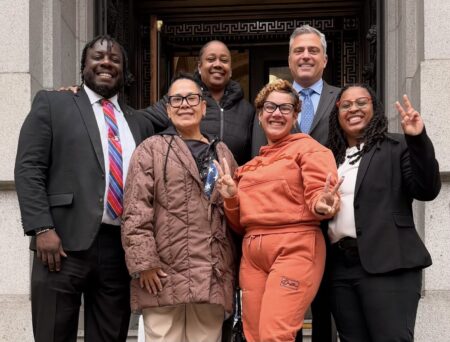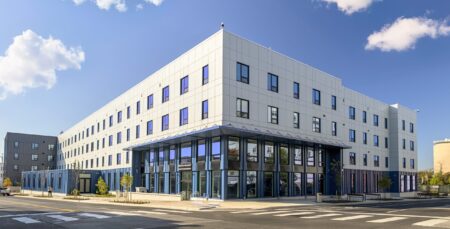(BALTIMORE – July 23, 2025) – Last week, Walter P. Carter Institute for Leadership & Service announced the official launch of the Community Leadership and Empowerment Program (CLEP) , a free, nonpartisan initiative designed to grow civic understanding, build local leadership, and connect Baltimore residents to the tools of power.
Baltimore has long been home to powerful civic movements and neighborhood-based leadership. From tenant unions to cultural institutions, the city has always produced people who organize, resist, and reimagine. What sets CLEP apart, aside from its nonpartisan, no-cost structure, is its founding team:
- Kristerfer Burnett, former Baltimore City Councilman and longtime community builder
- Jill P. Carter, Esq. former Maryland State Senator and lifelong civil rights advocate
- Aaron Maybin former NFL player turned educator, artist, and activist
BMORENews sat down with Maybin to talk about why CLEP matters, what leadership really looks like in Baltimore, and how art, justice, and systems literacy all go hand in hand.
- Aaron, you’ve always been a fierce advocate for youth, equity, and justice. What drew you to the CLEP initiative, and how does it align with your work in education and the arts?
You know what’s wild? Jill, Kris, and I actually have a mutual friend who, on separate occasions, had deep conversations with each of us about what we’re building, what we believe in, what we’re fighting for. And that friend came back like, “Y’all trying to do the same thing. But y’all moving in silos. So guess what? You gon’ do it together. This is what we’re going to.” Jill (jokingly) calls her “The General,” and we laugh, but that moment was real. And here we are.
This is something I’ve wanted to do for a while. I founded my nonprofit foundation back in 2009, the moment I got into the NFL. The focus was always supporting the arts, youth expression, giving kids something they could hold onto, and building community from the inside out. Fast forward to now – I’m no longer in the league. I’m knee-deep in serving my community, on the ground level for years. I see the gaps. I see where the needs are.
There are so many different roles in this work. When you look at me, Jill, and Kris, we’ve all taken different paths. We each have different roles in the fight. But the goal has always been the same destination: one Baltimore. That’s what CLEP represents.
- Baltimore has no shortage of challenges, but also incredible young leaders. Why is now the right time for a program like CLEP?
Given the political climate nationally and locally, we’ve reached a place where we have to think about the next generation. Teaching them about how to be civically engaged. We’ve got to make sure these lessons, this history, this sense of who we are as a people… that it’s not lost.
I’m excited for CLEP because this is the moment. There’s something for everybody in this work. Everybody doesn’t have to be the chief. Some people are better suited to be soldiers. Everybody doesn’t have to be front and center, we need strategists, organizers, and volunteers. But everybody has a role to play. This program creates space for that – to learn, lead, build, and organize authentically.
- What does real leadership look like to you, and how do we teach that in neighborhoods that have been historically ignored?
Most of my work has been in West Baltimore. That’s home for me. But I’ll be the first to say: we’ve got strong leaders and organizations across the city – like the Tendea Family in East Baltimore, Challenge to Change, We OurUs, Baltimore B360, I am Mentality, and so many more. And that’s how it should be. We all have our zones, our roots. But we also know when to come together.
It’s no secret I call certain parts of the city the trenches. Look at the recent tragedies. Police shootings in West Baltimore, the mass overdoses. These aren’t isolated events. Black neighborhoods have been systematically disenfranchised for generations. In our neighborhoods, it can feel at times like a war zone.
But the answer isn’t despair. It’s us. Our Unity, our love for each other. We need more of our people involved. Baltimoreans are unique. Our culture, our rhythm, our struggle. It’s not something you can study in a textbook or watch on social media. So with CLEP, my hope is we can engage more folks who might be working in silos… who maybe thought about organizing or giving back but didn’t have the on-ramp. Now they do.
- Many programs focus on national politics, but CLEP focuses on Baltimore and Maryland. Why was that choice made?
Because this is where we live. This is where our kids go to school, where your neighbors suffer or succeed. If you don’t know who your councilperson is or what policies are shaping your block, then how are you gonna change anything at the national level? We need to start local and build from the ground up.
One of my goals is for CLEP to help people connect the dots between their lived experiences and the systems in place. And when folks understand that, that’s power. And they will feel a responsibility to help reshape those systems.
- You talk a lot about lived experience and culture. How does that influence the way you teach, paint, and speak?
That’s exactly how I live. Everything I create comes from experience. My classroom, my rec center, my community, my kids. I don’t teach from a textbook (though I do help to write them). I teach from what I’ve lived. And Baltimore deserves that kind of learning too. A Learning process that sees them, reflects them, respects them.
That’s why I’ve written curriculums when I taught in Baltimore City Public Schools. That’s why I’ve published books; because we all need to get on code. Because we need more tools that speak to us, not just about us. CLEP does that. It’s rooted in our people’s wisdom. That’s real education.
- CLEP centers Baltimore’s roots, and systemic literacy. How do you see art and culture helping participants better understand systems of power and their place in them?
Art is truth reflected through style. Culture is resistance. When I walk into a classroom and ask students to paint their trauma or write their story, I’m not just asking them to create, I’m asking them to confront the systems that tried to silence them.
CLEP builds on that same concept. Understanding systemic inequities – who benefits, who doesn’t, and why is step one. But once you know, what will you do? That’s where culture and art come in. We bring our style and creative artistry to help people imagine what’s possible and build it.
- If CLEP helps build the next generation of organizers, educators, or artists like yourself, what’s one lesson you hope they carry with them?
Never shrink yourself to fit a space that was never meant to hold your brilliance. Whether you’re in a boardroom or on a stoop. Your voice, your experience, your truth matters. And you can use that truth to help create something better.
- CLEP is partnering with Coppin State University to host its first convening. What does it mean to hold this work at an HBCU?
Man, it means everything. HBCUs matter deeply, especially in a state like Maryland. Back in the day, if you wanted to be a teacher you went to Coppin. That was the place. That legacy still holds weight.
And now when you look at West Baltimore, Coppin is right in the heart of it. It is expanding, it is growing, it is holding space in a real way. My wife, Samierra is a proud graduate of Coppin State. So for them to host this first cohort is a blessing. It is alignment. It shows that this work, this leadership, this investment in the next generation is coming from us, for us, in the places that built us.
- How can city and state leaders ensure programs like CLEP aren’t just feel-good moments, but lasting investments in the communities they claim to serve?
By putting money and policy behind the words that got them elected. Most of them campaigned on bringing change and opportunity to their people. But after taking office, the investment and priorities of political change that were promised are always on the horizon and never realized for their constituents.
It’s easy to cut a ribbon or post a photo-op. But are you investing in the people who’ve been doing the work? Are you listening when they speak? Are you following their lead?
CLEP isn’t about optics. It’s about ownership. And if leaders are serious, they’ll move accordingly.
- Where do you see CLEP going in the next 5 years? Could this model work outside Baltimore or even be scaled nationally?
Absolutely. Baltimore is the blueprint, but this ain’t just a Baltimore issue. Especially now, given the current political climate. Disconnection from power, a lack of civic education, feeling like your voice doesn’t matter – that’s happening all over the country. In rural towns. In urban cores. In suburban neighborhoods.
CLEP has the potential to be a national model. But wherever it goes, it’s got to stay rooted in the people. Rooted in place. Rooted in purpose.
Interested applying to join CLEP? Apply here.

